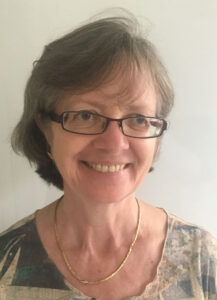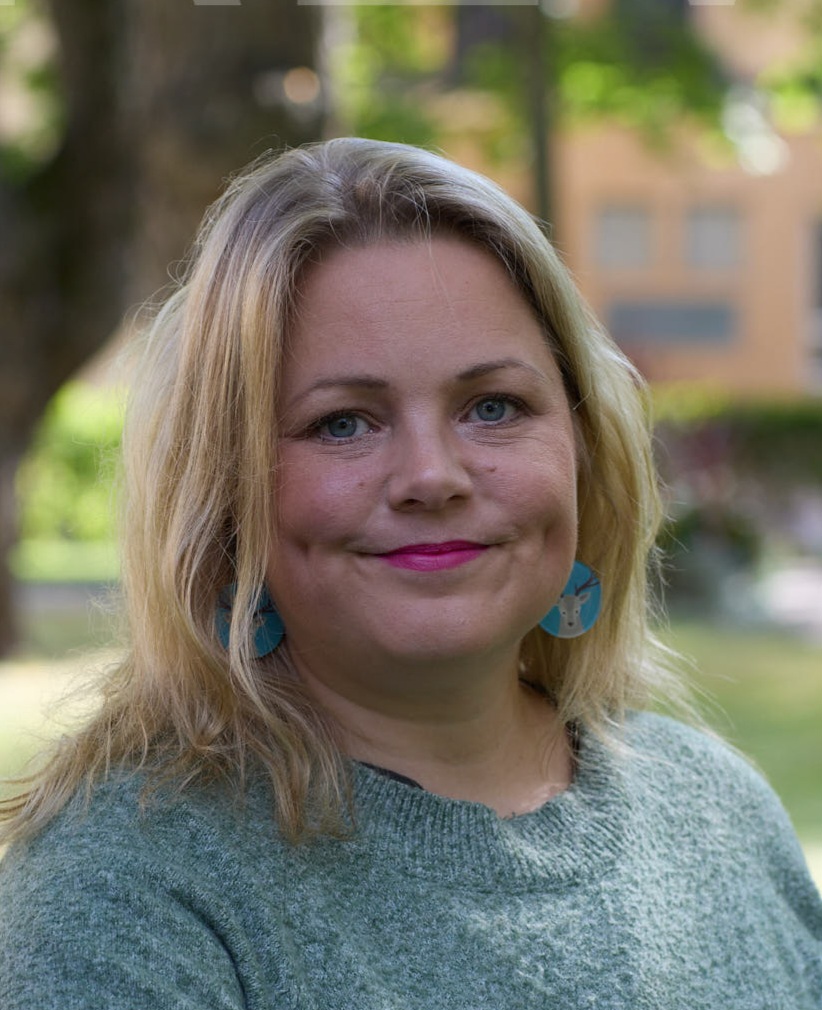Keynote speakers

Univ.-Prof. Dr.-Ing. Moritz Grosse-Wentrup
Faculty of Computer Science, University of Vienna, Vienna, Austria
Computations on the Neuronal Manifold
In computational neuroscience, the design of handcrafted models of
neuronal circuits has been highly fruitful in elucidating how neuronal
computations are realized in small model systems. Recent developments in
neuronal imaging techniques, such as calcium imaging, have expanded the
scope of study to larger neuronal populations and complex behaviors,
overwhelming traditional analysis methods. As a result, machine learning
and AI models are increasingly adopted to analyze the relation between
neuronal dynamics and behaviors. However, it remains uncertain whether
these techniques can provide the same mechanistic insights as
traditional methods in small models or what new advancements they offer
in cognitive neuroscience. In this talk, I present our efforts to
develop AI algorithms that infer the algorithms implemented by neuronal
dynamics from neuronal data. While an algorithmic description of a
neuronal system does not per se provide mechanistic insights into how a
neuronal circuit realizes its computations, I argue that the algorithmic
level provides valuable insights into how neuronal dynamics give rise to
cognition and its disorders. I showcase our results on calcium imaging
data recorded in the nematode C. elegans.
Experience Dependent Neuroplasticity – lessons from studies of childhood hemiplegia
Childhood hemiplegia (CH), characterised by predominant unilateral motor impairment, is the most common type of cerebral palsy but may also be acquired later in childhood. Typically it occurs as a result of unilateral bias of brain malformation, periventricular haemorrhage or peri-ventricular leukomalacia, posthaemorrhagic porencephaly or middle cerebral artery infarct. Type, extent and timing of cerebral insult seriously influences brain development, impacting on sensori-motor areas, corpus callosum and corticospinal tract integrity with large variability demonstrated on brain imaging findings, degree of hand function impairment and developmental outcomes. The identification of the ‘best responders’ to treatment from the research evidence remains elusive.
There is inconclusive evidence that neuroplastic changes reflecting ipsi-lateral CST connectivity to the affected hand, measured by magnetic resonance imaging (MRI) or transcranial magnetic stimulation (TMS) prior to intensive motor interventions, predict response to intensive unimanual therapies. Less is known about the interaction between movement and behaviour and the neuroplasticity and mechanisms of change surrounding bimanual control in CH in response to bimanual intervention. In this lecture I will take a multimodal approach to the understanding of neuroplastic changes in childhood movement disorders and implications for motor learning, demonstrated through our research. I will propose models by which Machine Learning may contribute to the understanding of experience dependent neuroplasticity. Consideration will be given to the theoretical as well as empirical evidence of the mechanisms by which the interventions (should) work to guide future research and clinical practice.

Professor Dido Green
Department of Rehabilitation, Jönköping University, Jönköping, Sweden

PhD, Professor Jean-Jacques Temprado
Institute of Movement Science, Aix-Marseille Univeristy, Marseille, France

PhD student Julia Jakubowska
Institute of Movement Science, Aix-Marseille Univeristy, Marseille, France
When Physics Meets Neuroscience: A Dynamical Systems Approach to (Loss of) Motor Adaptability During Aging
In recent years, the use of theoretical physics and advanced mathematical modeling with aging biology, collectively known as „Gerophysics,” has provided new insights into the mechanisms underlying aging and longevity. Physics-based frameworks, complex systems science, and quantitative mathematical models, initially introduced in the 1980s to study the mind-brain-body system, have also a great potential to elucidate behavioral adaptability and its decline during aging.
This lecture aims to showcase how the frameworks of Coordination Dynamics and Loss of Complexity offer new perspectives on aging within the neurocognitive and behavioral system. After presenting a historical overview of these frameworks’ introduction to cognitive neuroscience and human movement science, we will show how they can explain the control of complex coordination movements and the critical roles played by sensory and cognitive mechanisms in behavioral adaptability (J.J. Temprado). Then, we will consider how the relationship between motor variability — a potential marker of age-related loss of complexity in the neuro-behavioral system — and adaptive capacities in coordinated movements can be experimentally investigated and modelled in older adults (Julia Jakubowska).
From Actin to Inflammation:
Cellular Insights into Brain Plasticity in Health and Disease
Neuronal function and adaptability hinge on the dynamic nature of cellular structures. Two critical sites of such plasticity are dendritic spines—small protrusions along dendrites that house excitatory synapses—and the axon initial segment (AIS), the site of action potential initiation. Both structures undergo remarkable structural and functional remodeling in response to activity-dependent signals, experience, and environmental stimuli. In this talk, I will first present our recent findings on the molecular regulation of dendritic spine and AIS plasticity.
I will then shift focus to how peripheral inflammation exerts long-term effects on the brain. In this ongoing project, we assess behavioral changes in mice alongside cellular alterations in neurons, astrocytes, microglia, and macrophages. While we are collecting data from the whole brain, our current focus is on the hippocampus and choroid plexus. At the signaling level, we are particularly interested in the roles of the complement system and cytokines.
Understanding the dual-edged nature of plasticity—both protective and pathological—may offer new avenues for therapeutic intervention in inflammation-associated brain disorders.

Doc. Pirta Hotulainen
Minerva Foundation Institute for Medical Research, Helsinki, Finland

Dr. Ali Jawaid, MD, Phd
Senior Group Leader and Laboratory Head
Translational Neuropsychiatry Research Group (TREND Lab)
The Science of Transgenerational Trauma: Just a Matter of Fa(c)t
Childhood trauma is an important risk factor for psychiatric and physical ailments during adulthood. Emerging evidence from rodent studies suggests that some behavioral and metabolic symptoms of childhood trauma are transmissible across generations. However, the translational implications of this novel concept are in the preliminary stages.
Our work involves a systematic examination of epigenetic regulators, specifically microRNAs, in serum, sperm, and milk samples collected from ethnically diverse human trauma cohorts. The overarching aim is to identify the molecular underpinnings of the long-term effects and transmission of psychological trauma symptoms. microRNAs were analyzed in the serum of Pakistani children with recent trauma in the form of paternal loss and maternal separation (PLMS), sperm of adult Pakistani men with a history of complex trauma before age 17, milk of lactating Polish mothers with a history of adverse childhood experiences, and the serum and sperm of adult men and exposed to the Srebrenica genocide in Bosnia & Herzegovina during childhood, as well as the serum of their children.
Molecular analyses of differentially expressed microRNAs across these samples indicate a conserved molecular signature involving cholesterol signaling and associated microRNAs in the biological embedding and possible transmission of childhood trauma. Current efforts are focused on modeling the role of lipids and lipid-associated factors in trauma transmission using ethologically relevant mouse models and ex vivo approaches.
Statistical language learning in adults – what facilitates and hinders learning?
Since the seminal study of Saffran, Newport and Aslin (1996), statistical language learning has been studied in babies, children and adults as one of the key mechanisms of language acquisition. Statistical learning is based on automatic tracking of the probabilistic structures in one’s environment, and for language, the transitional probability structure between linguistic units. In this talk, I will focus on different aspects of statistical language learning in adults, looking at different aspects of speech and cognition which either facilitate or hinder learning. Special focus will be put on recent and ongoing studies of the neural networks associated with statistical language learning, and how manipulating certain nodes of this network with transcranial magnetic stimulation (TMS) may lead to improved learning outcomes in healthy adults.
